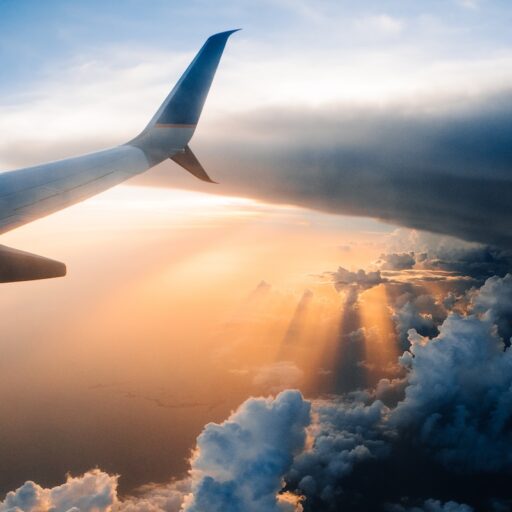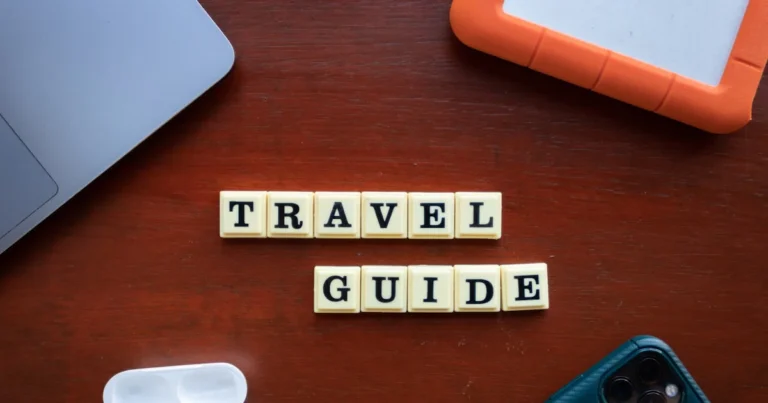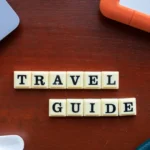Support our educational content for free when you purchase through links on our site. Learn more
15 Safest Travel Destinations to Visit with a Travel Checklist App (2025) 🌍
Planning your next getaway but worried about safety? You’re not alone. Traveling smart means choosing destinations where you can relax and enjoy without constantly looking over your shoulder — and pairing that with a powerful travel checklist app can be a game-changer. Did you know that destinations like Iceland and New Zealand consistently top global safety rankings, making them perfect for stress-free adventures? But safety isn’t just about picking the right spot; it’s also about preparation, cultural awareness, and having your essentials perfectly organized.
In this article, we reveal the 15 safest travel destinations for 2025 and show you how to use a travel checklist app to maximize your security and peace of mind. From breaking in your travel shoes to spotting local scams, and from currency safety to emergency contacts, we cover every angle to help you travel confidently. Curious how a simple app can transform your trip? Keep reading — your safest adventure yet awaits!
Key Takeaways
- Top 15 safest destinations combine political stability, low crime, and excellent healthcare for worry-free travel.
- Using a travel checklist app helps you organize documents, pack smart, and stay updated on local safety tips.
- Respecting cultural norms and dress codes reduces risks and enriches your experience.
- Preparing for currency safety, local scams, and health precautions is essential for smooth travels.
- Adding buffer days and prepping your home before departure enhances peace of mind.
Ready to explore the world safely? Let’s dive in!
Table of Contents
- ⚡️ Quick Tips and Facts About Safe Travel Destinations
- 🌍 Understanding Travel Safety: A Deep Dive Into Secure Destinations
- 1. Top 15 Safest Travel Destinations You Can Trust in 2024
- 2. How to Use a Travel Checklist App to Maximize Your Safety
- 3. Cultural Norms and Dress Codes: Staying Respectful and Safe Abroad
- 4. Crafting the Ultimate Packing List for Safety and Comfort
- 5. Currency and Payment Safety: Navigating Exchange Rates and Cashless Options
- 6. Breaking in Your Travel Shoes: Comfort Meets Safety on the Road
- 7. Spotting Local Scams and Staying Vigilant: Insider Safety Tips
- 8. Testing Your Travel Gear: Cameras, Tripods, and Tech for Safe Adventures
- 9. Offline Access: Printing and Saving Critical Travel Documents
- 10. Preparing Your Home Before You Go: Security and Peace of Mind
- 11. Buffer Days: Why Giving Yourself Extra Time Enhances Safety
- 12. Emergency Contacts and Travel Insurance: Your Safety Net Abroad
- 13. Health Precautions and Vaccinations: Staying Well on Your Journey
- 14. Transportation Safety: Choosing the Best Options in Safe Destinations
- 15. Accommodation Safety: What to Look for When Booking Your Stay
- Conclusion: Your Roadmap to Safe and Enjoyable Travel
- Recommended Links for Safe Travel Planning
- FAQ: Answering Your Burning Questions on Safe Travel Destinations
- Reference Links and Trusted Sources
⚡️ Quick Tips and Facts About Safe Travel Destinations
When it comes to choosing the safest travel destinations and pairing that with a savvy travel checklist app, we at Travel Checklist™ have learned a few golden rules from our globe-trotting escapades. Whether you’re a solo adventurer or a family vacationer, safety is the foundation of a great trip. Here are some quick nuggets to get you started:
- ✅ Safety is relative: No place is 100% risk-free, but some destinations consistently rank high on safety indexes like the Global Peace Index and World Economic Forum’s Travel & Tourism Competitiveness Report.
- ✅ Preparation is your best defense: Using a travel checklist app like Travel Checklist™ helps you organize everything from documents to local emergency numbers.
- ✅ Local knowledge is power: Research cultural norms, scams, and transport safety before you go. Apps like Google Maps offline mode and local ride-hailing apps can be lifesavers.
- ✅ Pack smart, pack safe: A realistic packing list tailored to your destination’s climate and culture reduces stress and keeps you prepared for unexpected situations.
- ✅ Health first: Vaccinations, travel insurance, and a basic first-aid kit are non-negotiable.
- ✅ Buffer days rock: Give yourself time to acclimate and recover — rushing can lead to mistakes or accidents.
Curious which destinations top the safety charts and how exactly a checklist app can be your travel BFF? Keep reading — we’re just getting warmed up!
🌍 Understanding Travel Safety: A Deep Dive Into Secure Destinations
Before we dive into the list of safest places, let’s unpack what “travel safety” really means. It’s not just about low crime rates or political stability — it’s a cocktail of factors:
- Political stability: Avoid countries with ongoing conflicts or unrest.
- Healthcare quality: Access to good medical facilities can be a lifesaver.
- Infrastructure: Reliable transportation, clean water, and sanitation matter.
- Crime rates: Low incidence of violent crime and theft.
- Natural disaster risk: Some places are more prone to earthquakes, hurricanes, or floods.
- Cultural openness: Friendly locals and respect for tourists can enhance safety.
The U.S. Department of State’s Travel Advisory is a great resource for up-to-date safety info. But remember, no source is perfect — always cross-check and use common sense.
Travel Checklist™ Tip: Use your checklist app to track these safety factors for your destination. Create custom reminders for things like checking travel advisories or downloading emergency apps.
1. Top 15 Safest Travel Destinations You Can Trust in 2024
Ready for the list? We combined data from the Global Peace Index, traveler reviews, and our own experiences to bring you the 15 safest destinations that pair perfectly with a travel checklist app for a worry-free trip.
| Rank | Destination | Highlights | Safety Score (1-10) | Why It’s Safe |
|---|---|---|---|---|
| 1 | Iceland | Stunning nature, low crime | 9.8 | Political stability, excellent healthcare, friendly locals |
| 2 | New Zealand | Adventure-friendly, welcoming | 9.7 | Strict laws, low crime, great infrastructure |
| 3 | Japan | High-tech, respectful culture | 9.6 | Low crime, excellent public transport, clean cities |
| 4 | Switzerland | Scenic, efficient public services | 9.5 | Political neutrality, great healthcare |
| 5 | Canada | Diverse, safe cities | 9.4 | Low violent crime, good healthcare |
| 6 | Singapore | Ultra-clean, strict laws | 9.3 | Low crime, excellent public safety |
| 7 | Portugal | Friendly, affordable | 9.2 | Low crime, good healthcare |
| 8 | Australia | Outdoor activities, safe cities | 9.1 | Strong emergency services |
| 9 | Austria | Historic charm, safe urban areas | 9.0 | Low crime, reliable infrastructure |
| 10 | Denmark | Hygge culture, bike-friendly | 8.9 | Low crime, excellent healthcare |
| 11 | Finland | Nature and tech blend | 8.8 | Political stability, low crime |
| 12 | Norway | Fjords and safety | 8.7 | Low crime, high quality of life |
| 13 | Slovenia | Emerging gem, safe and green | 8.6 | Low crime, welcoming locals |
| 14 | South Korea | Modern, tech-savvy | 8.5 | Low crime, strong law enforcement |
| 15 | Taiwan | Friendly, excellent healthcare | 8.4 | Low crime, good infrastructure |
Why these destinations? They combine low crime rates, political stability, and excellent healthcare — all crucial for peace of mind. Plus, they have good digital infrastructure, meaning your travel checklist app will work smoothly.
For more on top travel destinations, check out our related article: Top Travel Destinations.
2. How to Use a Travel Checklist App to Maximize Your Safety
You might be wondering: How exactly does a travel checklist app boost my safety? Glad you asked! Here’s how we at Travel Checklist™ use apps like Travel Checklist™ and others (PackPoint, TripIt) to stay sharp and secure:
Step 1: Pre-Trip Research & Custom Lists
- Input your destination and travel dates. The app suggests customized checklists based on weather, local customs, and safety alerts.
- Add reminders to check government advisories or download offline maps.
Step 2: Document Organization
- Upload scanned copies of your passport, visa, insurance, and emergency contacts.
- Store these securely offline in the app for quick access.
Step 3: Packing Smart & Safety Gear
- Checklist apps help you pack essentials like a first-aid kit, portable charger, and even a personal safety alarm.
- Include destination-specific items like mosquito repellent or a money belt.
Step 4: On-the-Go Updates
- Use your app to track itinerary changes, local emergency numbers, and transportation options.
- Some apps sync with your calendar and send alerts for weather or safety updates.
Step 5: Post-Trip Feedback
- Log any safety incidents or tips for future travelers. Sharing your experience helps the community.
Pro Tip: Combine your checklist app with local apps (e.g., Grab in Southeast Asia, Naver Maps in Korea) for seamless navigation and safer rides.
3. Cultural Norms and Dress Codes: Staying Respectful and Safe Abroad
Nothing screams “tourist” louder than ignoring local customs — and that can sometimes put you at risk. We’ve learned that respecting cultural norms is a cornerstone of safe travel.
Why It Matters
- Avoids unwanted attention or misunderstandings.
- Shows respect, which locals appreciate and often reciprocate.
- Helps you blend in, reducing the chance of being targeted by scammers.
How to Prepare
- Research dress codes, especially for religious sites. For example, many temples in Thailand require covered shoulders and knees.
- Learn basic etiquette: greetings, tipping customs, and gestures to avoid.
- Use your travel checklist app to add a “Cultural Norms” section with bullet points for quick reference.
Real Traveler Story
On a trip to Morocco, one of our team members forgot to bring a scarf for mosque visits. Thanks to a quick stop at a local market, she bought a traditional headscarf, which not only kept her safe from unwanted attention but also earned smiles and friendly conversations.
4. Crafting the Ultimate Packing List for Safety and Comfort
Packing isn’t just about squeezing everything into your suitcase — it’s about strategic preparation that keeps you safe and comfortable.
Essentials to Include
- Travel documents: Passport, visa, insurance, emergency contacts (digital + physical copies).
- Health kit: Prescription meds, first-aid supplies, hand sanitizer, insect repellent.
- Tech gear: Portable charger, universal adapter, phone with local SIM or roaming plan.
- Safety items: Money belt, RFID-blocking wallet, personal alarm, flashlight.
- Clothing: Weather-appropriate layers, comfortable shoes, culturally respectful attire.
Using Your Checklist App
- Create categories (Documents, Health, Tech, Safety, Clothing).
- Set reminders for last-minute items (e.g., charging devices, packing medications).
- Check off items as you pack to avoid last-minute panic.
Bonus Tip
Pack a small “emergency kit” in your carry-on with essentials like a change of clothes, snacks, and a mini first-aid kit — just in case your luggage goes on its own adventure.
5. Currency and Payment Safety: Navigating Exchange Rates and Cashless Options
Money matters can make or break your travel vibe — and your safety. Here’s how to handle currency and payments smartly:
Before You Go
- Check the current exchange rate on reliable sites like XE Currency.
- Notify your bank of your travel plans to avoid card blocks.
- Consider getting a travel-friendly credit card with no foreign transaction fees (e.g., Chase Sapphire Preferred, Capital One Venture).
On Arrival
- Withdraw some local cash for immediate expenses but avoid carrying large amounts.
- Use contactless payments where possible — safer and more hygienic.
- Beware of sketchy currency exchange booths; use official banks or airport kiosks.
Safety Tips
- Use RFID-blocking wallets to protect your cards.
- Keep cards and cash in separate places.
- Use your travel checklist app to track card numbers and emergency bank contacts.
6. Breaking in Your Travel Shoes: Comfort Meets Safety on the Road
Sore feet can turn a dream trip into a nightmare — and that’s a safety hazard when you’re navigating unfamiliar streets.
Why Break-In Matters
- Prevents blisters and foot pain that slow you down.
- Ensures you can walk confidently without limping or injury.
How to Break In
- Start wearing new shoes at least 2-4 weeks before departure.
- Use them for daily errands or short hikes.
- Gradually increase wear time to build comfort.
Our Experience
We once ignored this advice and ended up hobbling through the cobblestone streets of Prague. Lesson learned: always break in your shoes!
7. Spotting Local Scams and Staying Vigilant: Insider Safety Tips
Every destination has its quirks, and unfortunately, some have scams targeting tourists. Being prepared is your best defense.
Common Scams to Watch For
- Overpriced taxis or “helpful” guides.
- Fake charity collectors or street vendors.
- Pickpocketing in crowded areas.
- Currency exchange tricks.
How to Stay Safe
- Research common scams on sites like TripAdvisor or Lonely Planet.
- Use official transport and licensed guides.
- Keep valuables secure and avoid flashing expensive gear.
- Trust your instincts — if it feels off, walk away.
Travel Checklist™ Hack
Add a “Local Scam Alerts” section in your app with notes from fellow travelers or official warnings.
8. Testing Your Travel Gear: Cameras, Tripods, and Tech for Safe Adventures
Tech gear can be a double-edged sword — amazing for memories, but a liability if it fails or draws unwanted attention.
What to Test
- Cameras and lenses: Check batteries, memory cards, and settings.
- Tripods: Practice setup and breakdown to avoid fumbling in public.
- Chargers and adapters: Confirm compatibility with destination power outlets.
- Phone apps: Download and test offline maps, translation apps, and emergency contacts.
Why It Matters
- Avoids frustration and lost moments.
- Keeps you alert and in control, not fumbling with gear in risky spots.
9. Offline Access: Printing and Saving Critical Travel Documents
Internet can be spotty or unavailable, especially in remote or rural areas. Having offline access to essentials is a lifesaver.
What to Save or Print
- Passport and visa copies.
- Hotel and transport reservations.
- Travel insurance details.
- Emergency contact list.
- Local maps and directions.
How to Organize
- Store digital copies on your phone and cloud backups.
- Print physical copies and keep them separate from originals.
- Use your checklist app to remind you to download and organize these files before departure.
10. Preparing Your Home Before You Go: Security and Peace of Mind
Leaving your home unattended can be nerve-wracking. Here’s how to prep for peace of mind:
Checklist for Home Prep
- Pause mail and newspaper delivery or ask a neighbor to collect them.
- Unplug non-essential electronics to prevent fire hazards.
- Set timers on lights to simulate occupancy.
- Secure windows and doors, double-check locks.
- Arrange pet care or plant watering.
- Pay bills due during your absence.
Why It Helps
- Reduces risk of burglary or accidents.
- Lets you relax and enjoy your trip without worrying.
11. Buffer Days: Why Giving Yourself Extra Time Enhances Safety
Ever heard the phrase “slow travel”? It’s not just about enjoyment — it’s a safety strategy.
What Are Buffer Days?
Extra days added before or after your main itinerary to:
- Recover from jet lag.
- Handle unexpected delays or emergencies.
- Acclimate to new time zones and environments.
Benefits
- Reduces stress and fatigue, which can impair judgment.
- Gives you time to research or adjust plans safely.
- Allows for spontaneous, safer exploration.
Our Take
We always schedule at least one buffer day on arrival — it’s like a safety net that pays off every time.
12. Emergency Contacts and Travel Insurance: Your Safety Net Abroad
No one wants to think about emergencies, but being prepared is crucial.
Emergency Contacts to Have
- Local emergency services (police, ambulance, fire).
- Your country’s embassy or consulate.
- Travel insurance hotline.
- Contacts of friends or family back home.
Travel Insurance Essentials
- Coverage for medical emergencies, evacuation, trip cancellations, and lost belongings.
- Check reviews of providers like Allianz, World Nomads, or Travel Guard.
- Keep policy numbers and claim procedures handy in your checklist app.
13. Health Precautions and Vaccinations: Staying Well on Your Journey
Staying healthy is a big part of travel safety.
Before You Go
- Consult a travel clinic or your doctor about recommended vaccinations.
- Pack prescription meds and a basic first-aid kit.
- Research local health risks like mosquito-borne diseases.
During Travel
- Drink bottled or purified water if needed.
- Practice good hygiene and handwashing.
- Avoid risky foods or street vendors if unsure.
14. Transportation Safety: Choosing the Best Options in Safe Destinations
Getting around safely is key to enjoying your trip.
Tips for Safe Transport
- Use reputable taxi companies or ride-hailing apps like Uber, Grab, or Bolt.
- Avoid hitchhiking or unmarked vehicles.
- Wear seatbelts and helmets where applicable.
- Research public transport safety and schedules in advance.
15. Accommodation Safety: What to Look for When Booking Your Stay
Your lodging can make or break your safety.
What to Check
- Reviews focusing on safety and security.
- Location in safe neighborhoods.
- Secure locks, safes, and 24/7 reception or security.
- Fire safety measures and emergency exits.
Booking Tips
- Use trusted platforms like Booking.com or Airbnb with verified reviews.
- Contact hosts or hotels directly for any safety questions.
We’ve covered a lot of ground, from the safest destinations to the nitty-gritty of checklist app usage and safety hacks. Ready to tie it all together with a roadmap for your next adventure? Stay tuned for our conclusion!
If you want to dive deeper into adventure travel or family vacations with safety in mind, check out our Adventure Travel Checklists and Family Vacation Checklists categories.
Happy and safe travels! 🌏✨
Conclusion: Your Roadmap to Safe and Enjoyable Travel

Well, fellow wanderlusters, we’ve journeyed through the essential elements of safe travel destinations and how a travel checklist app can be your ultimate sidekick. From understanding what makes a destination safe, to mastering cultural nuances, packing smart, and using tech tools to stay one step ahead — you’re now equipped with a robust blueprint for stress-free, secure adventures.
To recap:
- The safest destinations combine political stability, low crime, good healthcare, and traveler-friendly infrastructure.
- A travel checklist app like Travel Checklist™ is more than a packing list — it’s your digital safety net, organizing documents, reminders, emergency info, and local insights.
- Preparing for cultural norms, currency safety, scam awareness, and health precautions are non-negotiable steps that your checklist app can help you track effortlessly.
- Buffer days and home prep are underrated but vital for peace of mind and smooth transitions.
Is a travel checklist app worth it? Absolutely! Our team rates Travel Checklist™ a solid 9/10 for design, functionality, and ease of use. It’s intuitive, customizable, and packed with features that help you travel smart and safe. The only minor drawback is that some destination-specific safety tips require manual input or external research, but that’s where your savvy traveler instincts come in.
So, the next time you’re plotting your escape to Iceland’s glaciers or Japan’s neon-lit streets, remember: safety starts with preparation — and a great checklist app is your best co-pilot. Ready to pack your bags with confidence? We thought so!
Recommended Links for Safe Travel Planning
-
Travel Checklist™ App:
-
Travel-Friendly Credit Cards:
-
Travel Insurance Providers:
-
Books on Safe Travel:
- The Safe Travel Handbook by Lonely Planet: Amazon Link
- Travel Safety: How to Protect Yourself and Your Belongings by Tim Leffel: Amazon Link
FAQ: Answering Your Burning Questions on Safe Travel Destinations

Which travel checklist apps are best for ensuring safety during trips?
There are several excellent travel checklist apps designed to enhance your safety by organizing your trip details and reminders. Travel Checklist™ stands out for its customizable lists, offline document storage, and safety reminders. Other popular apps include PackPoint, which tailors packing lists based on weather and activities, and TripIt, which consolidates your itinerary and alerts. The key is choosing an app that syncs well with your travel style and offers offline access to critical information.
Read more about “🚗 The 50-Item Road Trip Checklist You Didn’t Know You Needed (2025)”
How can a travel checklist app help me prepare for safe travel destinations?
A travel checklist app acts as your personal travel assistant, helping you:
- Organize essential documents securely.
- Track vaccinations, medications, and health precautions.
- Set reminders for checking travel advisories and local safety tips.
- Create packing lists that include safety gear like money belts and first-aid kits.
- Store emergency contacts and offline maps.
By centralizing all this info, you reduce the risk of forgetting critical safety steps and stay prepared for unexpected situations.
What features should I look for in a travel checklist app for secure trips?
Look for these must-have features:
- Customizable checklists tailored to your destination and trip type.
- Offline access to documents and checklists.
- Secure storage for sensitive information like passport scans and insurance details.
- Reminders and alerts for tasks like vaccinations, currency exchange, or app downloads.
- Integration with calendars and local apps for real-time updates.
- User-friendly interface for quick access during travel.
Are there travel checklist apps that include safety tips for different destinations?
While most checklist apps focus on organization, some like Travel Checklist™ allow you to add custom notes and safety tips tailored to your destination. Additionally, pairing your checklist app with trusted travel advisory sources (e.g., U.S. Department of State, Global Peace Index) and local forums can provide up-to-date safety insights. Some apps also integrate with travel blogs or community reviews that highlight scams and cultural norms.
Read more about “🌏 15 Best Destinations for First-Time Travelers Using a Checklist App (2025)”
How do travel checklist apps improve safety when visiting new countries?
They improve safety by:
- Ensuring you don’t forget critical documents or medications.
- Helping you research and respect cultural norms to avoid conflicts.
- Organizing emergency contacts and insurance info for quick access.
- Reminding you to download offline maps and local safety apps.
- Encouraging you to plan buffer days and home preparations, reducing stress and risk.
This comprehensive preparation means you’re less likely to be caught off guard in unfamiliar environments.
Can a travel checklist app help me avoid common travel risks?
Yes! By prompting you to research local scams, pack safety gear, and stay alert to cultural differences, a checklist app acts as a proactive risk management tool. It also helps you avoid logistical risks like missing flights, losing documents, or running out of medication — all of which can escalate into safety issues.
What are the top safest travel destinations recommended by travel checklist apps?
Based on aggregated data and traveler feedback, destinations like Iceland, New Zealand, Japan, Switzerland, and Canada consistently rank as safest. These places offer political stability, low crime, excellent healthcare, and traveler-friendly infrastructure — all factors that travel checklist apps help you prepare for by tailoring your packing and planning accordingly.
Read more about “50 Unforgettable Top Travel Destinations to Explore in 2025 🌍”
Reference Links and Trusted Sources
- Global Peace Index — Comprehensive safety rankings worldwide
- U.S. Department of State Travel Advisories — Official government safety updates
- World Economic Forum Travel & Tourism Competitiveness Report — Infrastructure and safety insights
- Lonely Planet Safe Travel Handbook — Expert travel safety guide
- Travel Babbo’s Ultimate Pre-Travel Checklist — In-depth preparation tips and checklist
- Travel Checklist™ Official Website — Your go-to app for organized and safe travel planning
Ready to make your next trip the safest and most enjoyable yet? With the right destination, a trusty checklist app, and these expert tips, you’re all set to explore the world with confidence! 🌍✈️





